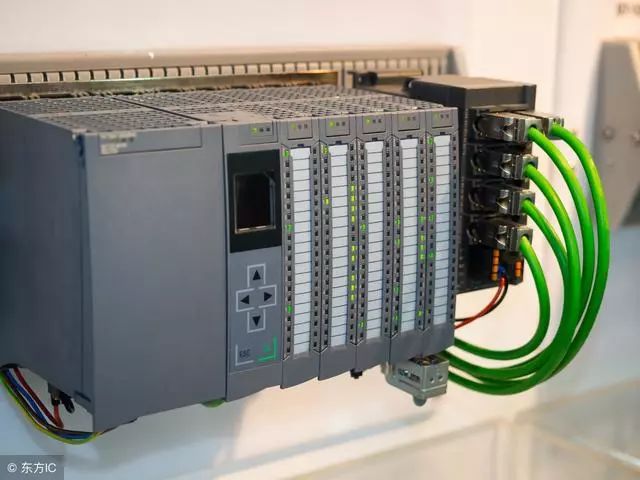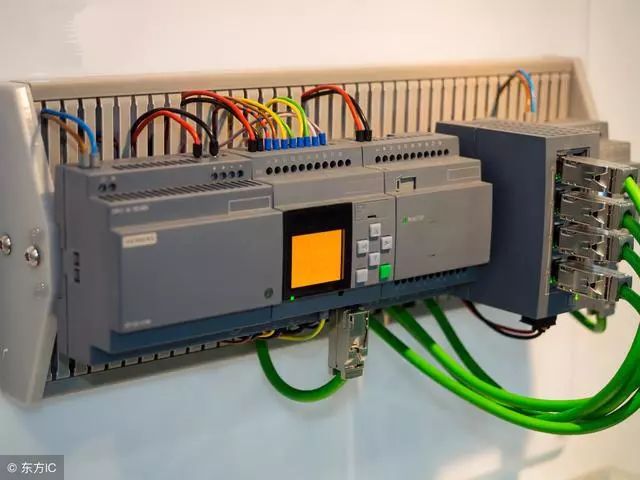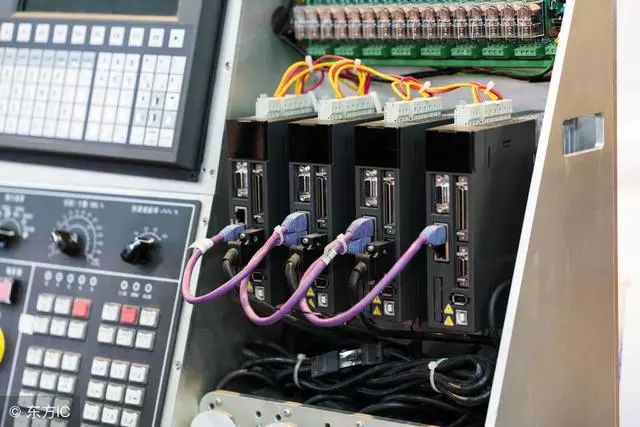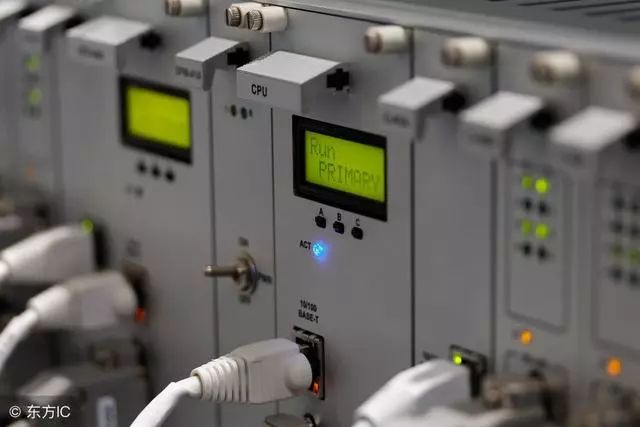The personnel engaged in electric power operations all know that the development of industrial production and science and technology are inseparable from PLC's automatic control. PLC can be broadly understood as: centralized relay extension control cabinet, in actual production applications, PLC greatly saves industrial control The cost has strengthened the centralized management and automatic control of the equipment. To learn a good PLC, the foundation of PLC must be solid.

1, from the composition of the PLC, in addition to CPU, memory and communication interface, and the industrial site directly related to what interface? And explain its main functions.
(1) Input interface: The signal of the controlled device is accepted, and the internal circuit is driven or disconnected by the optocoupler device and the input circuit.
(2) Output interface: The execution result of the program is output through the optocoupler and output components (relays, thyristors, and transistors) of the output interface to control the turning on or off of the external load.
2. What are the parts of the PLC's basic unit and what do they do?
(1) CPU: The core part of the PLC, directing the PLC to perform various tasks. Such as accepting user programs and data, diagnostics, executive execution programs, etc.;
(2) Memory: storage system and user's programs and data;
(3) I / O interface: The connection part between the PLC and the controlled object in the industrial production site, used to receive the signal of the controlled device and the execution result of the output program;
(4) Communication interface: exchange information with monitors, printers and other devices through the communication interface;
(5) Power supply.

3, PLC switch output interface which several types? What are the characteristics of each?
Thyristor output type: Under normal circumstances, only with AC load, fast response, high operating frequency;
Transistor output type: Under normal circumstances, only with DC load, fast response, high operating frequency;
Relay output type: Under normal circumstances, AC and DC loads are available, but the response time is long and the operating frequency is low.
4. According to the structure type, what types of PLC are there? What are their characteristics?
(1) Integral type: The CPU, power supply, and I/O components are all concentrated in a single chassis. The structure is compact and the price is low. Generally, a small PLC adopts this structure.
(2) Modular: Divide each part of PLC into several separate modules, and configure different modules to form a system according to requirements. It has the characteristics of flexible configuration, convenient expansion and maintenance, and is generally adopted by medium and large PLCs. The modular PLC consists of a frame or a base plate and various modules that are mounted on the sockets of the frame or the base plate.
(3) Stacked type: Combining the characteristics of integral type and modular type, CPU, power supply, and I/O interface of stacked PLC are also independent modules, but they are connected by cables, making the system not only configured Flexible and compact.
5. What is the PLC scan cycle and what is its main impact?
PLC scanning process includes internal processing, communication services, input processing, program execution, and output processing. The time required for these five phases to scan once is called the scan cycle.
The scan cycle is related to the CPU operating speed, PLC hardware configuration, and user program length.

6. What method does the PLC use to execute the user program? What stages does the user program execute?
The PLC executes the user program in a cyclic scan mode. The execution of the user program includes the input sampling phase, the program execution phase, and the output refresh phase.
7. What are the advantages of PLC control system compared with relay control system?
(1) Control method: PLC adopts program mode to realize control, it is easy to change or increase control requirements, and the contact of PLC is infinite;
(2) Work mode: PLC adopts serial work mode to improve the anti-interference ability of the system;
(3) Control speed: PLC's contacts are actually triggers, and instruction execution time is in microseconds;
(4) Timing and counting: The PLC uses a semiconductor integrated circuit as a timer, and the clock pulse is provided by a crystal oscillator, which has high delay accuracy and a wide range. PLC has the counting function that the relay system does not have;
(5) Reliability and maintainability: PLC adopts microelectronics technology with high reliability. The self-inspection function can detect its own faults in time and the monitoring function facilitates debugging and maintenance.
8. Why does PLC produce output response hysteresis and how can I improve I/O response speed?
Because the PLC adopts the centralized sampling and centralized output cyclic scan working mode, the input state can only be read in the input sampling phase of each scan cycle, and the execution result of the program is only sent out in the output refresh phase; the PLC input is next. Delay of output delay, length of user program, etc. all can cause output response delay.
To improve the I / O ringing sampling, output refresh, or direct input sampling, output refresh, and interrupt input and output and intelligent I / O interface and other ways.
9. What are the internal software relays of FX0N series PLC?
Input relays, output relays, auxiliary relays, status registers, timers, counters, data registers.

10, how to choose PLC?
1) Model selection: It should be considered in terms of structural form, installation method, functional requirements, response speed, reliability requirements, and unification of models;
2) Capacity selection: It should be considered in terms of I/O points and user storage capacity.
3) I/O module selection: including switch quantity and analog I/O module selection, and selection of special function module;
4) Selection of other devices such as power modules and programmers.
11. Briefly describe the features of PLC centralized sampling and centralized output work mode. What advantages and disadvantages does this work have?
Centralized sampling: In a scan cycle, the input state is sampled only during the input sampling phase, and the input is blocked when entering the program execution phase.
Centralized output: During a scan cycle, the state associated with the output in the output shadow register is transferred to the output latch only during the output refresh phase, the output interface is refreshed, and the output state is always stored in the output image in other phases. Register. Using this method of operation can improve the system's anti-jamming capability and enhance the reliability of the system, but it will cause the PLC input/output response to lag.
12. What kind of working methods does PLC use and what are its characteristics?
PLC uses centralized sampling, centralized output, and cyclic scanning.
Features: Centralized sampling refers to the fact that within a scan cycle, the PLC samples the input state only during the input sampling phase, and the input is blocked when entering the program execution phase.
Centralized output means that during a scan cycle, the PLC transfers the output-related status of the output image register to the output latch only during the output refresh phase, refreshes the output interface, and the output status is preserved at other stages. Output image register.
Cyclic scan means that the PLC needs to perform multiple operations in one scan cycle. It uses time-sequential scan to execute one by one in sequence and repeatedly and repeatedly.

13. What are the major parts of the electromagnetic contactor? Briefly describe the working principle of the electromagnetic contactor.
Electromagnetic contactors generally consist of electromagnetic components, contacts, arc extinguishing devices, release spring mechanisms, brackets and bases. The contactor operates according to the electromagnetic principle: When the electromagnetic coil is energized, the coil current generates a magnetic field, so that the static iron core generates electromagnetic attraction attracting the armature, and the contact is actuated to cause the normally closed contact to open and the normally open contact to close. Both are Linked. When the coil is de-energized, the electromagnetic force disappears and the armature is lowered in response to the release of the spring, causing the contact to revert, ie the normally open contact opens and the normally closed contact closes.
14, a brief description of the definition of programmable logic controller (PLC).
A programmable logic controller (PLC) is an electronic device that is specifically designed for digital operation in an industrial environment. It uses a memory that can be programmed to store instructions for performing operations such as logical operations, sequential operations, timing, counting, and arithmetic operations, and control various types of data through digital or analog input and output. Mechanical or production process.
PLCs and their associated peripherals should all be designed in such a way that they can be easily integrated with industrial control systems and easily extend their functions.
15. The difference between working principle of PLC system and relay contactor system is simply stated.
The composition of the device is different;
The number of contacts is different;
The method of implementation of control is different;
Different ways of working.

16. What are the characteristics of the STL Stepped Trapezoidal Instructions of Mitsubishi FX 2N Series PLC?
(1) Automatic reset of the transfer source;
(2) Allow dual output;
(3) The main control function.
Flex Power Supply,Flex Power Supply 80Plus,700W Adapter Server Power Supply,Flex 700W Power Supply
Boluo Xurong Electronics Co., Ltd. , https://www.greenleaf-pc.com